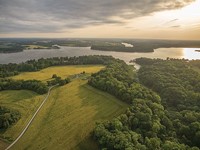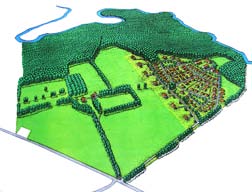 Local jurisdictions have several options for protecting forests and trees during the development process. The following web resources include an overview of Maryland’s Forest Conservation Act, as well as information on conservation subdivision approaches, riparian forest setbacks, and technical guidance to ensure successful outcomes for onsite tree protection measures.
Local jurisdictions have several options for protecting forests and trees during the development process. The following web resources include an overview of Maryland’s Forest Conservation Act, as well as information on conservation subdivision approaches, riparian forest setbacks, and technical guidance to ensure successful outcomes for onsite tree protection measures.
Maryland's Forest Conservation Act (DNR)

The Forest Conservation Act (Act), enacted in 1991, was designed to minimize the loss of forest loss due to development. Implemented by individual counties in Maryland, the Act makes the identification and retention of priority forests and other sensitive areas an integral part of the site planning process. Of primary interest are areas adjacent to streams or wetlands, those on steep or erodible soils, or those within or adjacent to large contiguous blocks of forest or wildlife corridors.
A Guide to Preserving Trees in Development Projects (The Pennsylvania State University, College of Agricultural Sciences, PennState Extension)
In addition to chapters on tree inventory, tree preservation planning, tree preservation techniques during construction, repairing damage from construction, post-construction activities, and others, the report includes information on tree health and soil quality. A PDF of the site can be downloaded.
Protecting Trees During Construction (Colorado State University Extension)
This brief paper includes information on tree preservation planning, protection of a tree’s root system, soil compaction, and the importance of avoiding soil fills and changes in grade that can harm trees. It discusses how to prune injured trees and provides a list of trees that have a high, medium, or low adaptability to environmental change.
Reduced Parking Footprint Criteria (LEED)
The LEED (Leadership in Energy and Environmental Design) green building rating system is used for certifying sustainable development. One point of a project’s LEED score can be earned through a reduced parking footprint, which can preserve existing trees on the site. The requirements are that no more than 20 percent of the total development footprint area be used for new off-street surface parking, with no individual surface parking lot larger than two acres.
rating system is used for certifying sustainable development. One point of a project’s LEED score can be earned through a reduced parking footprint, which can preserve existing trees on the site. The requirements are that no more than 20 percent of the total development footprint area be used for new off-street surface parking, with no individual surface parking lot larger than two acres.
Urban Watershed Forestry Manual - Part 2 - Conserving and Planting Trees at Development Sites (USDA; prepared by Center for Watershed Protection)
This publication presents specific ways to enable developers, engineers, or landscape architects to incorporate more trees into a development site. The proposed approach focuses on protecting existing trees, planting trees in storm water treatment practices, and planting trees in other open spaces at a development site.
ANSI A300 Standards
ANSI A300 standards are the generally accepted voluntary industry consensus standards for tree care practices. The standards apply to professionals who provide for or supervise the management of trees, shrubs, and other woody landscape plants. Intended users include businesses, government agencies, property owners, property managers, and utilities. The standards do not apply to agriculture, horticultural production, or silviculture, except where explicitly noted otherwise. Part 1 (pruning), Part 2 (soil management), Part 5 (management of trees and shrubs during site planning, site development and construction), Part 8 (root management) and Part 10 (integrated pest management) are of particular relevance.
Open ANSI A300 Standards